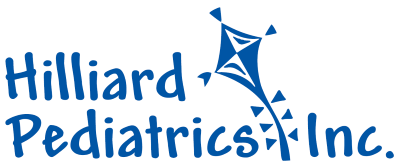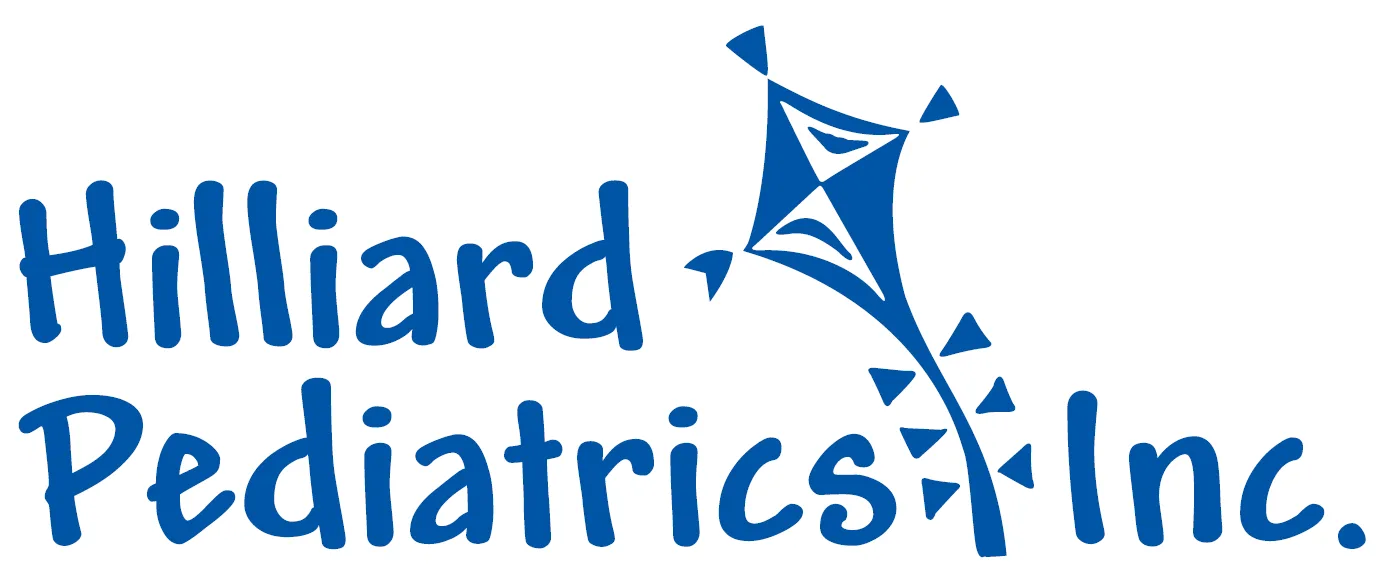Rashes
Hilliard Pediatrics, Inc. - Dr. Beth Schloss, MD
Introduction
Rashes are very common in children and can occur for a variety of reasons. We will discuss some common childhood rashes, but this document does not cover all rashes that can be seen in children. Please call the office with any concerns.
Eczema
Eczema looks like dry, scaling patches of skin, often with some redness, and it can occur anywhere on the body. Eczema is very common in infants and frequently occurs on multiple places on the body at this age, including the face trunk, and arms/legs. It can be itchy so older infants may scratch at it. In older kids, eczema most commonly occurs around the knees and elbows, but may also occur anywhere on the body.
If frequent moisturizing and changing the soap in the bath is not enough to clear up the eczema, then add over-the-counter 1% hydrocortisone ointment 2x per day for 1 week. Apply the hydrocortisone ointment first, then apply the moisurizer over the top. This often is enough to clear up an eczema flare-up. Then return to the regular routine of moisturizing 1-2 times per day. If eczema is still not clearing up, then call the office for an appointment as you may need a prescription medication to help.
Viral Rashes
Viruses can cause a lot of rashes in children. Sometimes they are associated with a fever and other symptoms (like cold symptoms or vomiting, etc.). Sometimes there are no other symptoms except for the rash. Here are some common rashes caused by viruses.
- Hand, Foot, and Mouth - This illness will cause red spots and blisters on the hands and feet and around the mouth. It can also cause ulcers in the throat. Sometimes it causes lesions on the buttocks, arms, and legs. It is often associated with a fever, but not always. It is one of the few rashes that will cause spots on the palms of the hands and soles of the feet. It is very contagious. Please see our separate information sheet on this topic. Hand, Foot, and Mouth Protocol
- Chicken Pox - Due to the success of the Chicken Pox (Varicella) vaccines, this is now an uncommon rash. We do see occasional cases in kids under 1 year old, prior to their first vaccine. These cases will be a classic Chicken Pox rash, whihc is a widespread rash of fluid-filled vesicles on a red base. These lesions are very itchy and will open then scab over after they are scratched. New lesions will continue to develop so there will be spots in various stages of healing. This can be accompanied by a fever, but tends to be a much milder illness in infants compared to older children. In vaccinated kids, we infrequently see an atypical, mild form of Chicken Pox. If you are concerned your child has Chicken Pox, you should make an appointment in our office to be evaluated.
- Fifth's Disease - This rash causes a "slapped cheek" appearance on the face followed by a lacy rash on the trunk and arms a few days later. This is caused by the parvovirus B19. IT can be accompanied by fever, runny nose, and muscle aches. This rash will resolve on its own in 1-2 weeks. If your child is diagnosed with Fifth's disease, then you will need to notify any pregnant women they have been in contact with as this can potentially cause serious complications for the fetus.
- Viral Exanthems - These are the most common viral rashes that we see. They are typically flat red spots or small red bumps that are most prominent on the trunk. They often then spread down the arms and legs. The rash is not painful and is usually not (but sometimes) itchy. There is often an associated fever or other ill symptoms (cold symptoms, vomiting and diarrhea, etc.). These rashes will resolve on their own in about 3-7 days. There is no specific treatment needed unless the rash is itchy. If there is some itchiness, you may treat with 1% hydrocortisone ointment, which is available over-the-counter.
Hives
Hives are raised, red welts that are usually itchy. They can be caused by a variety of different things. Most commonly these are caused by viral infections. Other causes include a drug reaction, food reaction, bee stings, or anaphylaxis (serious allergic reaction). Very frequently, there is not a clear trigger for hives in kids.
If your child has hives and difficulty breathing, go to the Emergency Room immediately (or call 911) as this may be a serious allergic reaction. If you are conerned your child had an allergic reaction to food or medication, but they are not having any breathing concerns, call our office as we may need to see your child in the office and/or set up an appointment with an allergist for testing. Hives can be treated with Children's Benadryl® or Children's Claritin® or Zyrtec® to help decrease the hives and to help with the itching. Hives usually last a few days, but may last up to 2 weeks.
Bacterial Skin Infections
There are some common rashes in kids that are caused by bacteria. These are typically related to a break in the skin barrier (like a scrape or a bug bite) where bacteria were able to get through the skin to cause an infection.
- Impetigo is a superficial bacterial skin infetion that is common in children. It is patches of red skin with honey-colored crusting and scabbing. It frequently occurs around the nose and mouth when kids have a runny nose or around a scrape or bug bite. If it is a very small area, you can try using Neosporin®, but often this requires a prescription antibiotic so should be seen in the office.
- Abscesses are deeper skin infections where a pocket of pus develops under the skin. The skin is often red, warm to the touch, and tender. It may develop a white head. These can be small or large and should be evaluated in our office. These will often need oral antibiotic and may need to be drained to treat the infection.
- Folliculitis is a rash with red bumps and pimples on the skin. It is an infection of the hair follicles within the skin. It frequently occurs in the summer under the swimsuit areas (especially when in the hot tub). This rash will often clear up on its own by avoiding the trigger (ex. wet swimsuits, hot tub). If it is not clearing up in 5-7 days or if worsening, then it may need an antibiotic so we should see your child in the office.
Ringworm/Fungal Skin Infections
Fungal infections will cause redness and scaling of the skin. These infections pass from skin-to-skin contact, so it is very common in wrestlers, etc. Ringworm is a fungal infection on the body that will cause a circle of scaling skin that will clear in the center as it grows. Ringworm is itchy. Fungal infections on the feet (athlete's foot) will cause redness and cracking/peeling of the skin between the toes. Ringworm and athlete's foot can be treated with over-the-counter Lotrimin (clotrimazole) cream. If not resolving, then schedule an appointment in our office. Fungal infections on the scalp cause scaling of the skin and hair loss in the area. This infection is more difficult to treat and will need a prescription medication to treat. If concerns for ringworm of the scalp, then we will need to see your child in the office.
Molluscum
The rash of molluscum contagiosum is pearly, flesh-colored to pinkish bumps clustered in an area on the skin. The bumps will often have a small dimple in the middle. It can occur anywhere on the body. It will eventually resolve on its own, but typically last for 6-12 months, sometimes up to 2 years! Though this rash is very frustrating since it lasts so long, it is not dangerous to the child. The rash is mildly contagious, so avoid sharing bath towels, bedding, or clothing with other children. Keep rash covered with clothing when possible (depending on location). If your child has numerous or bothersome lesions, then may need to see a dermatologist for potential treatments.

